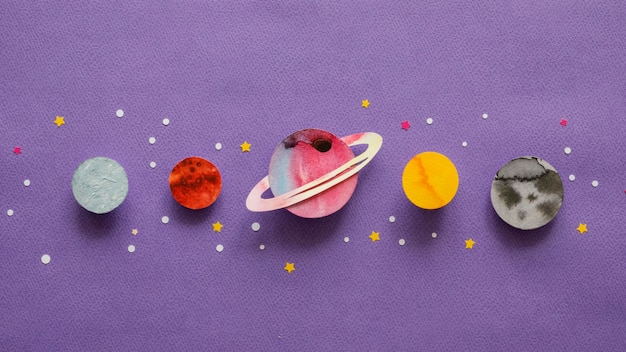Five Fascinating Facts about Mars

Mars is often referred to as the Red Planet due to its reddish appearance.
It has a diameter of roughly half the size of Earth.
Mars has the tallest volcano and the deepest canyon in the entire solar system.
The planet has a thin atmosphere made up mainly of carbon dioxide.
Mars has two small moons named Phobos and Deimos.
The average temperature on Mars is about -80 degrees Fahrenheit.
It takes approximately 687 Earth days for Mars to complete one orbit around the sun.
The surface of Mars is covered in iron oxide, giving it a rusty-red color.
Mars experiences massive dust storms that can last for months.
The highest peak on Mars, called Olympus Mons, is nearly three times the height of Mount Everest.
Mars has polar ice caps that consist mostly of frozen water and carbon dioxide.
The longest recorded valley on any planet in the solar system, Valles Marineris, is found on Mars.
Mars is home to the largest volcano in the solar system, Olympus Mons.
The first successful mission to land on Mars was conducted by NASA’s Viking 1 spacecraft in 1976.
Scientists believe that Mars once had a much more favorable environment for supporting life than it does now.
Mars has a day length similar to Earth, with a day lasting approximately 24 hours and 40 minutes.
Many missions have been sent to Mars with the goal of studying its geology and searching for signs of past or present life.
Five Fascinating Facts about Mars part 2
The face on Mars is a famous rock formation that resembles a humanoid face, but it is just an optical illusion.
Mars has a thin atmosphere, which means that it has lower air pressure and cannot support liquid water on the surface.
The first successful rover mission on Mars was the Sojourner, which arrived in 1997 as part of NASA’s Pathfinder mission.
The atmosphere on Mars is 96% carbon dioxide, compared to Earth’s atmosphere, which is only 0.04% carbon dioxide.
Mars has the second-highest mountain in the solar system, known as Ascraeus Mons.
The soil on Mars is known as regolith and is made up of volcanic rocks, sand, and dust.
Mars has a significant temperature variation between day and night, with temperatures dropping to around -195 degrees Fahrenheit at night.
The average distance from Mars to the sun is about 141 million miles (225 million kilometers).
Mars is home to the largest volcanic plateau in the solar system, called the Tharsis Bulge.
Mars has the longest canyon system known in the solar system, measuring over 2,500 miles (4,000 kilometers) in length.
The Curiosity rover, which landed on Mars in 2012, has provided crucial data about the planet’s geology and potential habitability.
The length of a year on Mars is equivalent to about 687 Earth days.
Mars has a lower gravity than Earth, with roughly 38% of Earth’s gravity at its surface.
The thin atmosphere on Mars makes the sky appear pinkish-red during the day and provides breathtaking views of the stars at night.
Mars’ two moons, Phobos and Deimos, are irregularly shaped and are believed to be captured asteroids.
The largest canyon on Mars, Valles Marineris, is about 4,000 kilometers long, 200 kilometers wide, and up to 7 kilometers deep.
Mars has the highest known volcano in the entire solar system, Olympus Mons, reaching a height of about 13.6 miles (22 kilometers).
The amount of sunlight reaching the surface of Mars is only about 43% of the intensity on Earth.
Mars has a thin layer of carbon dioxide ice at its south pole, covering an area larger than the state of Texas.
The atmosphere on Mars is too thin to provide protection from harmful radiation, making it unsuitable for human habitation without proper shielding.
Despite its thin atmosphere, Mars experiences dust storms that can cover the entire planet, affecting surface visibility for months at a time.
The average temperature on Mars is colder than Antarctica, with temperatures rarely rising above freezing point.
Mars has a vast network of dry riverbeds and channels, suggesting that liquid water once flowed on its surface.
The discovery of the chemical perchlorate in the Martian soil raises questions about its potential habitability for microorganisms.
Mars’ thin atmosphere has led to substantial erosion, creating unique geological formations and landscapes.
Due to its lower atmospheric pressure, liquid water would evaporate quickly on the surface of Mars.
Mars experiences dust devils, similar to tornadoes, but with a cold and dry composition.
The first helicopter to fly on another planet, Ingenuity, successfully operated on Mars, demonstrating the potential of aerial exploration on the Red Planet.

